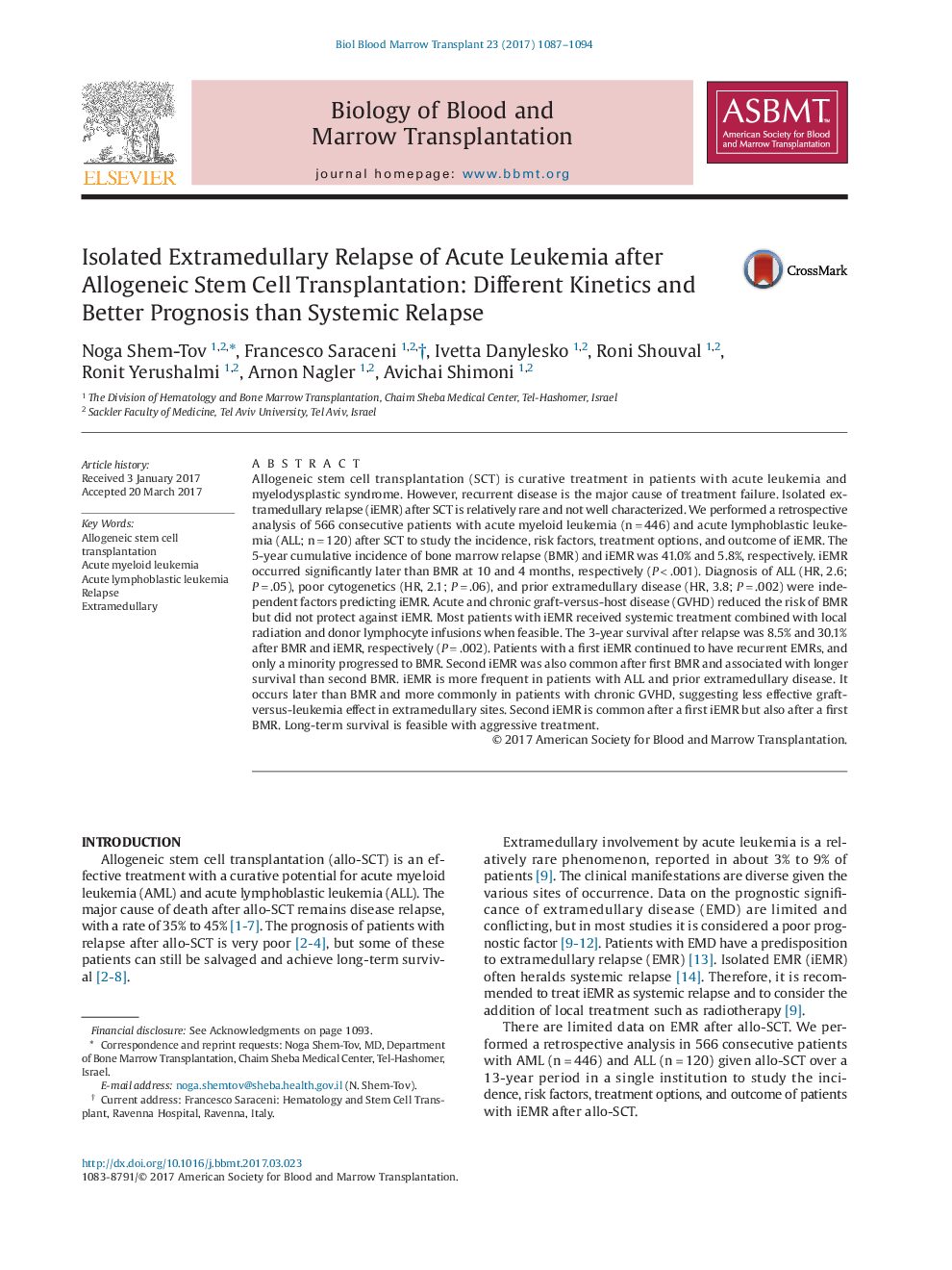| کد مقاله | کد نشریه | سال انتشار | مقاله انگلیسی | نسخه تمام متن |
|---|---|---|---|---|
| 5524343 | 1546239 | 2017 | 8 صفحه PDF | دانلود رایگان |

- Extramedullary relapse is relatively common after transplant for acute leukemia.
- Extramedullary relapse has specific kinetics and patient characteristics.
- Extramedullary relapse is treated by chemotherapy, radiation, and immunotherapy.
- Survival after extramedullary relapse is better than after systemic relapse.
Allogeneic stem cell transplantation (SCT) is curative treatment in patients with acute leukemia and myelodysplastic syndrome. However, recurrent disease is the major cause of treatment failure. Isolated extramedullary relapse (iEMR) after SCT is relatively rare and not well characterized. We performed a retrospective analysis of 566 consecutive patients with acute myeloid leukemia (nâ=â446) and acute lymphoblastic leukemia (ALL; nâ=â120) after SCT to study the incidence, risk factors, treatment options, and outcome of iEMR. The 5-year cumulative incidence of bone marrow relapse (BMR) and iEMR was 41.0% and 5.8%, respectively. iEMR occurred significantly later than BMR at 10 and 4 months, respectively (Pâ<â.001). Diagnosis of ALL (HR, 2.6; Pâ=â.05), poor cytogenetics (HR, 2.1; Pâ=â.06), and prior extramedullary disease (HR, 3.8; Pâ=â.002) were independent factors predicting iEMR. Acute and chronic graft-versus-host disease (GVHD) reduced the risk of BMR but did not protect against iEMR. Most patients with iEMR received systemic treatment combined with local radiation and donor lymphocyte infusions when feasible. The 3-year survival after relapse was 8.5% and 30.1% after BMR and iEMR, respectively (Pâ=â.002). Patients with a first iEMR continued to have recurrent EMRs, and only a minority progressed to BMR. Second iEMR was also common after first BMR and associated with longer survival than second BMR. iEMR is more frequent in patients with ALL and prior extramedullary disease. It occurs later than BMR and more commonly in patients with chronic GVHD, suggesting less effective graft-versus-leukemia effect in extramedullary sites. Second iEMR is common after a first iEMR but also after a first BMR. Long-term survival is feasible with aggressive treatment.
Journal: Biology of Blood and Marrow Transplantation - Volume 23, Issue 7, July 2017, Pages 1087-1094